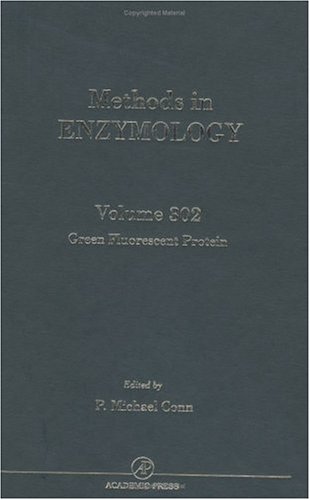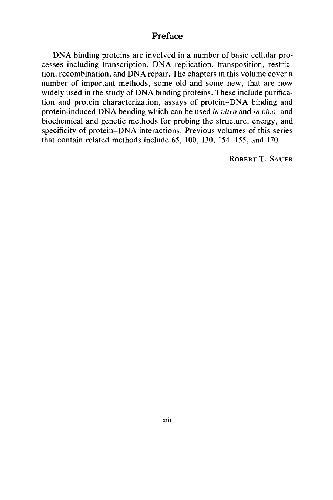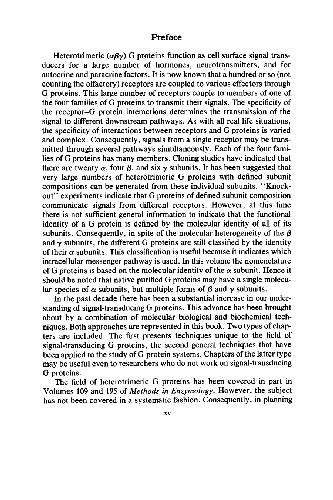Robert A. Meyers (Editor-in-Chief)
Table of contents :
Cover Page……Page 1
Table of Contents……Page 2
Glossary……Page 3
United States Biomass……Page 4
Direct Heating……Page 5
Ethanol Production……Page 6
Biogas……Page 8
Biogas for Smallholders……Page 10
Vegetable Oil……Page 11
Soil Erosion……Page 12
Water Use……Page 13
Conclusion……Page 14
References……Page 15
Glossary……Page 16
Potential and Actual Yields of Biomass……Page 17
Comparison of Biomass and Petroleum……Page 18
Sugar Crops……Page 19
Starch Crops……Page 20
Tree and Fiber Crops……Page 21
Forage and Grass Crops……Page 22
Food/Feed Consumption and World Protein/Calorie Demand……Page 23
Existing Fuels/Chemicals/Materials Uses of Biomass……Page 24
New Chemicals and Materials Uses……Page 25
Cost of Liquid Fuel Production from Biomass……Page 26
Need for Complete Raw Material Utilization……Page 27
Innovation and Risk……Page 28
New Technologies Needed for Low Cost Lignocellulose Conversion……Page 29
Potential Benefits……Page 30
Achieving the Benefits of Biobased Products……Page 31
References……Page 32
Introduction to Medical Biomaterials……Page 33
Aspects of the Structural Chemistry of Natural Materials Used in the Human Body……Page 34
Natural Polymers……Page 35
Natural Pliant Composites……Page 36
Natural Mineralized Tissues, Bone, Cartilage, and Enamel……Page 37
General Repair Mechanisms and Biocompatibility……Page 38
Synthesis……Page 39
Polymer Modification……Page 40
Polymers from Natural Sources……Page 41
Metals……Page 42
Ceramics……Page 43
Conventional Ceramics……Page 44
Bioactive Ceramics……Page 46
Composites Based on HAP……Page 48
Prevention of Unwanted Tissue Interactions……Page 49
Future Directions……Page 50
References……Page 51
Glossary……Page 52
Structural Proteins……Page 53
Silica……Page 54
Biological and Synthetic Processing……Page 55
The Process of Biomineralization……Page 56
Polymers……Page 57
Inorganic Particle Formation……Page 58
Tough-Layered Structures……Page 60
Cell Adhesion and Tissue Engineering……Page 62
References……Page 63
Glossary……Page 65
Mechanically Stirred Tank Bioreactors……Page 66
Bubble Columns……Page 68
Airlift Bioreactors……Page 69
Packed Bed Bioreactors……Page 70
Photobioreactors……Page 71
Solid-State Culture……Page 73
Bioreactors for Immobilized Enzymes and Cells……Page 75
General Features……Page 76
Oxygen Supply and Carbon Dioxide Removal……Page 78
Heat Removal and Temperature Control……Page 79
Monoseptic Operation, Cleaning, Sterilization……Page 81
Operational Modes of Bioreactors……Page 82
Medium Composition……Page 84
Cell Growth……Page 85
Productivity……Page 86
Enzyme Kinetics……Page 88
References……Page 89
Glossary……Page 90
Fundamental Principles of Fiber-Optic Chemical Sensors……Page 91
Basic Characteristics……Page 92
Optical Fiber Configurations……Page 93
Light Sources……Page 94
Optical Phenomena Employed for Sensing in Fiber-Optic Chemical Sensors……Page 95
Raman Spectroscopy……Page 96
Evanescent Wave Spectroscopy……Page 97
Intrinsic Sensing Mechanism—Direct Spectroscopy……Page 98
Liquid-Phase Sensing……Page 99
Gas-Phase Sensing……Page 100
pH sensing……Page 101
Gas and vapor sensing……Page 103
Ion sensing……Page 104
Immobilization Techniques……Page 105
Entrapment immobilization……Page 106
Biological Sensing Materials (Fiber-Optic Based Biosensors)……Page 107
Bioaffinity as the recognition mechanism in fiber-optic biosensors……Page 108
Fiber-Optic Chemical Sensors for in Vivo Analysis……Page 110
Environmental Fiber-Optic Chemical Sensors……Page 111
Industrial and Bioprocess Control Applications……Page 112
Multianalyte Sensing……Page 113
Distributed Chemical Sensing……Page 114
Imaging and Chemical Sensing……Page 115
References……Page 116
Glossary……Page 117
The Molecular Structure of Antibodies……Page 118
Glycosylation of Antibodies……Page 119
Production of Monoclonal Antibodies……Page 120
The Development of Cell Hybridization……Page 121
Cell Fusion to Immortalize Lymphocytes……Page 122
Clonal Selection of Mab-Secreting Hybridomas……Page 123
Radioimmunoassay (RIA)……Page 124
Recombinant Antibodies……Page 125
Therapeutic Antibodies……Page 126
Antibodies from Plants……Page 127
The Importance of Glycosylation to Therapeutic Antibodies……Page 128
In Vivo (Ascites) Production of Monoclonal Antibodies (Mabs)……Page 129
The Airlift Fermenter……Page 130
Agitation……Page 131
Serum and Serum-Free Medium for Antibody Production from Hybridomas……Page 132
References……Page 133
Glossary……Page 134
Image-Guidance Methods and Technologies……Page 135
Intraoperative Magnetic Resonance Imaging……Page 136
Image-Guided Neurosurgery……Page 139
Thermal Ablations……Page 140
Cryoablation……Page 141
Conclusion……Page 142
References……Page 143
Glossary……Page 146
Introduction……Page 147
Cell Types……Page 148
Hybridomas……Page 149
Transfer of Genes of Interest into Mammalian Cells……Page 150
Transient DNA Transfer into Mammalian Cells for Rapid Protein Synthesis……Page 152
Basic Culture Units……Page 153
Microcarrier culture:……Page 154
Celligen fermenter:……Page 155
Microporous Microcarriers……Page 156
The Culture Production Process……Page 157
Recombinant Products……Page 159
Cell Therapy……Page 160
Conclusion……Page 161
References……Page 162
Glossary……Page 163
Introduction……Page 164
Molecular Biology Tools……Page 165
Metabolic Network Analysis……Page 167
Metabolic Control Analysis……Page 168
Tools from Functional Genomics……Page 172
Applications of Metabolic Engineering……Page 173
Extension of Substrate Range……Page 174
Engineering of Cellular Physiology for Process Improvement……Page 175
Elimination of By-Product Formation……Page 176
Improvement of Yield or Productivity……Page 177
References……Page 178
Glossary……Page 179
Microfabrication……Page 181
Biosensors……Page 183
Biological Recognition Elements……Page 186
Detector Elements……Page 187
Optically Based Biosensors……Page 189
Other Detectors……Page 192
See also the Following Articles……Page 193
References……Page 194
Glossary……Page 195
Optical Fibers……Page 196
Optical Fibers……Page 197
Optical Fibers Made of Silica Glass……Page 198
Medical Lasers……Page 199
The Use of Various Lasers in Medicine……Page 200
Light Guides (Nonordered Bundles)……Page 201
Fiberscopes and Endoscopes……Page 202
Standard Endoscopes……Page 203
Fiberoptic Medical Diagnostics……Page 204
Physical Sensors……Page 205
Power Fibers for Medical Systems……Page 206
Laser Endoscopes……Page 207
Urology……Page 208
Laser Angioplasty Using Laser Catheters……Page 209
Cancer Diagnoses and Photochemotherapy……Page 210
Time Resolved Phenomena……Page 211
Outlook……Page 212
References……Page 213
Glossary……Page 214
Introduction/History……Page 215
Membrane Diffusion-Controlled Systems……Page 216
Osmotic Systems……Page 218
Important Controlled Release Products……Page 220
Transdermal Systems……Page 222
Targeted Drug Delivery……Page 224
See also the following Articles……Page 225
References……Page 226
Glossary……Page 227
Half-Life……Page 228
Mechanisms of Transport……Page 229
Gastrointestinal Absorption……Page 231
Inhalation……Page 232
Drug Distribution……Page 233
Volume of Distribution……Page 234
Renal Excretion……Page 235
Biliary Excretion……Page 236
Transplacental Transfer of Drugs……Page 237
Removal of Drugs by Dialysis……Page 238
Compartmental Approaches……Page 239
Physiologic Pharmacokinetic Models……Page 240
References……Page 241
Glossary……Page 243
Principles Of Chromatographic Separations……Page 246
Retention……Page 247
Column Efficiency and Zone Width……Page 248
Ion Exchange Chromatography……Page 249
Hydrophobic Interaction Chromatography……Page 250
Reversed-Phase Chromatography……Page 251
Separation by Affinity (Biospecific Interactions)……Page 252
Immobilized Metal Affinity Chromatography……Page 253
Separation by Size……Page 254
Process Design In Chromatography……Page 255
Gradient and Isocratic Elution Chromatography……Page 256
Displacement Chromatography……Page 257
Scale-Up Considerations……Page 258
Expanded (Fluidized) Bed Chromatography……Page 260
Preparative-Continuous Annular Chromatography……Page 261
Stationary Phases For Biochromatography……Page 262
Particles with Reduced Mass Transfer Limitation……Page 263
Monoliths……Page 264
References……Page 265
Glossary……Page 266
A Brief History Of Tissue Engineering……Page 267
Materials Used in Tissue Engineering……Page 269
Optimization of Surface Chemistry……Page 271
Fabrication of Porous Matrices……Page 273
Growth Factors, Hormones, and Signal Transduction……Page 274
Metabolic Engineering……Page 277
Cell Migration……Page 279
Metabolite Transport……Page 281
Microcarrier-based systems…….Page 283
Hollow-fiber systems…….Page 284
Morphogenesis of Engineered Tissues……Page 285
Summary……Page 286
In Vitro Construction of Connective Tissues……Page 287
Tissue Constructs Using Epithelial Cells……Page 288
Endocrine Tissues……Page 289
Future Prospects For
Tissue Engineering……Page 290
References……Page 291
Glossary……Page 292
Chain of Custody……Page 293
Initial Tests and Confirmation……Page 294
Quality Assurance and Validation……Page 295
Redistribution……Page 296
References……Page 297







Reviews
There are no reviews yet.